Used Car Buying Guide: Useful Tips You Shouldn’t Miss
Buying a used car can be an excellent way to get on the road while also saving money on the car you want. The used vehicle market offers a treasure trove of deals for budget-minded car buyers. However, unlike buying a brand-new car with a warranty, investing in the world of pre-owned vehicles comes with potential risks. You don’t want to end up stuck on the side of the road with a money pit disguised as a car.
To avoid making a bad deal, we made a useful used car buying checklist below to outline what to look for when shopping for a used car through a private seller or dealer. By following this step-by-step checklist, you’ll be able to identify high-quality vehicles and avoid those that will end up in the mechanic shop.
Read More:
Selling Your Used Car: Maximizing Your Car’s Value in Toronto’s Competitive Market
Expert Tips to Increase Your Used Car Trade-In Value
Selling Your Used Car in Ontario: How To Do It Right
YST Auto Sales offers a convenient and stress-free car-buying experience. Here’s what makes the difference:
Wide Selection of Certified Vehicles: Choose from hundreds of used cars from YST Auto Sales inventory, SUVs, trucks, sedans, and more.
Transparent History Reports: Get free CARFAX reports on every vehicle, so you know exactly what you’re buying.
Rigorous Inspections: Our vehicles go through a comprehensive inspection to ensure they meet the highest quality standards.
Warranty & Protection: Enjoy peace of mind with our complimentary warranty.
Buying a used car can be a smart financial decision, but it’s important to proceed with caution. By following our comprehensive guide and leveraging the resources offered by YST Auto Sales, you’ll be well on your way to finding a reliable, high-quality car that meets your needs and budget. Happy shopping!
Useful Used Car Buying Tips You Shouldn’t Miss

Useful Used Car Buying Tips You Shouldn’t Miss
Useful Used Car Buying Tips You Shouldn’t Miss
Here’s a breakdown of the key areas to inspect when buying a used car:
Investigate the Vehicle History Report
You need as much information as possible on the car. First, look for a “VIN” report to see if the automobile has been in an accident, has liens, or has been written off. Learn from the existing owner of the car and ask anything that raises your concerns.
A clean CARFAX record is good, but it is not a guarantee. Research to determine any issues you are concerned about or whether the model has been recalled. Consider supplementing your research with a mechanical inspection.
Check the Year and Mileage
A useful rule of thumb is that an automobile normally travels roughly 20,000 kilometers per year. So, a three-year-old car should have approximately 60,000 kilometers on the odometer. Higher mileage cars may require a large discount compared to lower mileage vehicles. To determine whether the car you’re looking at has high or low mileage, divide the odometer mileage by the vehicle’s age.
Note that a car with high mileage with has more wear and tear on its mechanical components. However, a ten-year-old vehicle with minimal mileage will not be an ideal option. Make sure you use resources like Canadian Black Book to calculate the car’s fair market value depending on its year, mileage, and condition.
Understanding the Car’s Maintenance
Dedicated owners follow the manufacturer’s guidelines for regular oil changes and transmission flushes. They are likely to retain detailed records of these services. A detailed maintenance history is a good indicator of a well-cared-for vehicle.
If you buy a used car from a dealership, reputable used car retailers should supply you with full-service records. If not, ask about any maintenance done by the dealership before putting the vehicle for sale.
Verifying the Car’s Warranty
Remember that a car’s warranty is based on the vehicle itself, not the owner. Before signing any documentation, verify that the manufacturer’s warranty is still active. A proper warranty may cover a considerable amount of mechanical repairs. While a car without a valid warranty isn’t necessarily a deal-breaker, it’s important to know before you buy.
Test Driving and Inspecting the Vehicle
Inspect the Exterior
You should evaluate the vehicle’s paintwork and take notes on any dents, paint damage, and corrosion. Take a look around the automobile, looking for any corrosion or paint damage. Localized tiny rust patches are easily repaired, but if the metal has completely rusted through, you may want to reconsider your purchase. Also, look at the car’s sides to determine if they are wavy. This implies that the car has had its paint job done.
Inspect the Frame
You need to inspect the car’s frame. While walking around the automobile, make sure it is level on the ground. Pay particular attention to the bumpers, then inspect into the trunk and hood. Inspect the bolts for scratch marks that may suggest replacement fenders, new bolts, or warping from a recent collision.
Inspect the Tires
The tires on the car will also need to be checked. The tire tread should be worn uniformly, and all four should be identical. Uneven tread or excessive wear on a few tires shows inadequate alignment, which could be a sign of steering, suspension, or frame problems. Poor alignment might be caused by steering components, potholes, or frame damage.
Perform Under-the-Hood Checks
The first thing you should look for under the car’s hood is dents, rust, and damage. They could indicate that the vehicle you’re contemplating was involved in an accident or was badly maintained. Inspect the belts for signs of wear and tear. Belts that are frayed or cracked may need to be replaced soon, so consider this when negotiating.
The engine is the most critical component of any vehicle. You should also be able to find a sticker with the VIN under the hood of the vehicle. If it isn’t there, you should ask the owner or the salesperson, as VIN sticker positioning varies by manufacturer. Next, check the engine for fluid leaks, rust, and fractured hoses and belts. Look for dark brown oil spots, which can indicate a leaking gasket. You should first ensure that the brake fluid reservoir is not leaking. Then you may need to inspect the hoses and belts to ensure there are no cracks. The radiator hoses should be felt to ensure they are not mushy. Then, remove the oil filler cap to ensure that there is no foam residue on the interior. If it does, you should leave immediately. The timing belt is the last thing you should inspect. Since it is the most expensive belt in the engine to repair.
Interior Checks
Inside the car, look for tears, stains, or any damage to the leather or carpeting. You’ll also need to inspect the interior electronics. Open the radio, ensure that the vehicle’s air conditioner is working properly, then press certain buttons to test the stereo and other electronic components.
Test Drive
A test drive is a key part of how to evaluate a used car. Plan your route and put the vehicle through its paces to assess maneuverability, braking, acceleration, and suspension.
Ensure all interior and exterior lights are functioning properly, including brake lights, turn signals, headlights, and taillights. Pay attention to any strange noises like clunking, rattling, or grinding. These could signal potential mechanical problems.
Test the car on different road surfaces to assess handling. Practice parking, reversing, and other maneuvers to ensure the car suits your driving style.
Mechanical inspection
If you believe you’ve found the used car of your dreams and decide to purchase. You should take it to a professional mechanic for an inspection. A mechanic can do a thorough inspection to see whether the vehicle has any underlying difficulties or areas that may become problematic in the future. This knowledge allows you to make informed decisions and avoid costly repairs in the future. The service is undoubtedly worthwhile because it may keep you from purchasing a car that may incur extra expenses in the future.
Read More:
Selling Your Used Car: Maximizing Your Car’s Value in Toronto’s Competitive Market
Expert Tips to Increase Your Used Car Trade-In Value
Selling Your Used Car in Ontario: How To Do It Right
YST Auto Sales offers a convenient and stress-free car-buying experience. Here’s what makes the difference:
Wide Selection of Certified Vehicles: Choose from hundreds of used cars from YST Auto Sales inventory, SUVs, trucks, sedans, and more.
Transparent History Reports: Get free CARFAX reports on every vehicle, so you know exactly what you’re buying.
Rigorous Inspections: Our vehicles go through a comprehensive inspection to ensure they meet the highest quality standards.
Warranty & Protection: Enjoy peace of mind with our complimentary warranty.
Buying a used car can be a smart financial decision, but it’s important to proceed with caution. By following our comprehensive guide and leveraging the resources offered by YST Auto Sales, you’ll be well on your way to finding a reliable, high-quality car that meets your needs and budget. Happy shopping!
